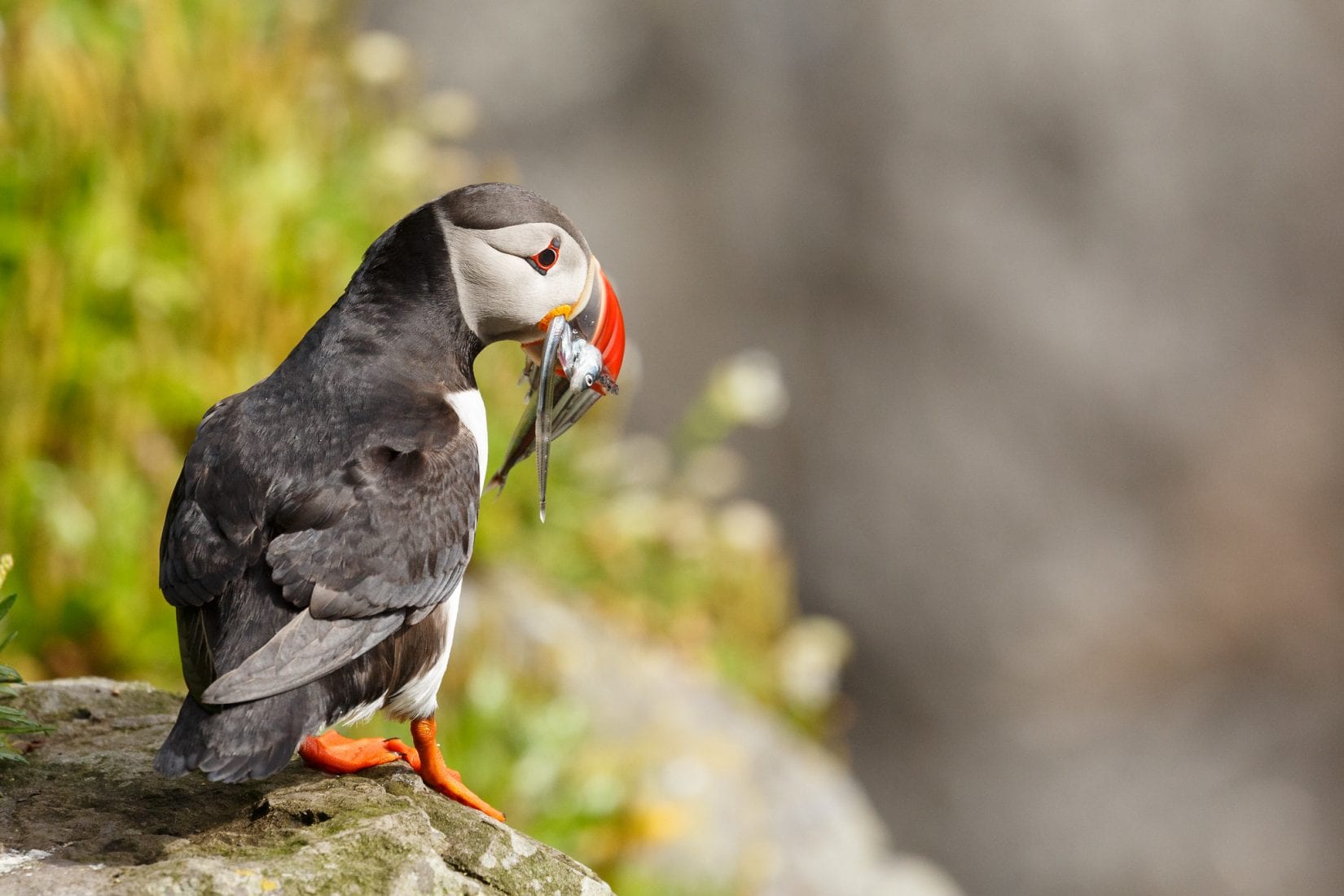East of the Mid Atlantic Ridge and north of the Azores lies the North Atlantic Current and Evlanov Sea basin (NACES) Marine Protected Area (MPA), a vital wintering ground for Puffins breeding in Ireland. Covering approximately 600,000km2, the site was designated a MPA for seabirds in 2021. Now, BirdWatch Ireland as part of a BirdLife International campaign across multiple countries, are pushing to have this protection extended to include the MPA’s seafloor and so provide greater protection for the site’s diverse range of species and habitats.
What is NACES and how was it identified?
The NACES MPA is designated under OSPAR, the Regional Convention for the Protection of the Marine Environment in the Northeast Atlantic, of which Ireland is a Contracting Party.
The site was designated following a study that revealed a major seabird hotspot in the North Atlantic high seas, beyond the national jurisdiction of all OSPAR parties. The study, which BirdLife International and BirdLife partners co-authored, mapped the abundance and diversity of 21 seabird species, with up to 5 million seabirds from 56 colonies using the area annually. This was the first time this magnitude of seabird concentrations has been documented in the high seas.
Why is NACES important for Ireland?
The NACES site is the wintering ground for one of Ireland’s Red-Listed and most iconic breeding seabirds; the Puffin. Puffins have been tracked from the unique summer breeding ground of the Skelligs to this equally unique hotspot in the North Atlantic, where the abundance of food sustains them throughout the winter and prepares them for the new breeding season.
Pushing for greater protection
Although the MPA was initially designated for seabirds the huge variety of marine biodiversity and the food chains which sustain this biodiversity hotspot, could benefit hugely from protecting the seafloor. This June, the OSPAR Commission will vote on whether to include the seafloor in the conservation objectives for the site.
If the seafloor is effectively protected, it will help safeguard the food chain for all species; from seabirds to other threatened species including Blue Whales, Leatherback Turtles, Loggerhead Turtles, Atlantic Bluefin Tuna and Basking Sharks. Seafloor protection would also help safeguard unique benthic biodiversity and habitats including Corals, Deep-sea Sponges and seamounts.
Fishing and shipping are the only human activities taking place at the site due to its inaccessibility for other industries at present. While there are concerns related to shipping and fishing activity, including light and plastic pollution and potential exploitation of mesopelagic fish populations (a key element in the marine food chain and in carbon sequestration), there are also concerns regarding future potential extractive activities including oil and gas exploration and deep-sea mining.
In February ICES, the International Council for Exploration of the Sea, concluded that there is substantial evidence of vulnerable marine ecosystems that warrants the extension of the NACES MPA’s scope to include seafloor protection. This is certainly a positive development ahead of the OSPAR vote in June, but widespread public support for extending protection to include the seafloor is needed to ensure this critical protection is put in place.
Sign BirdLife International’s petition to show your support for extending the NACES MPA’s protection to include the seafloor.
Photo credit: James West


